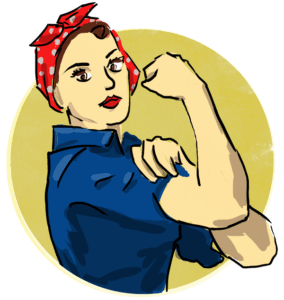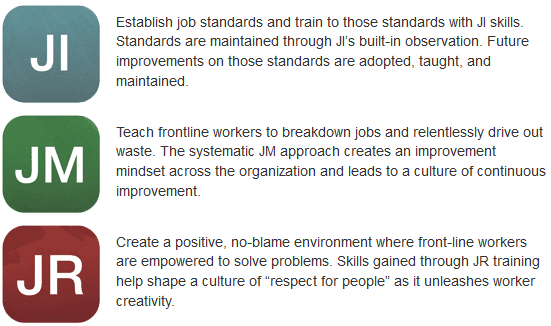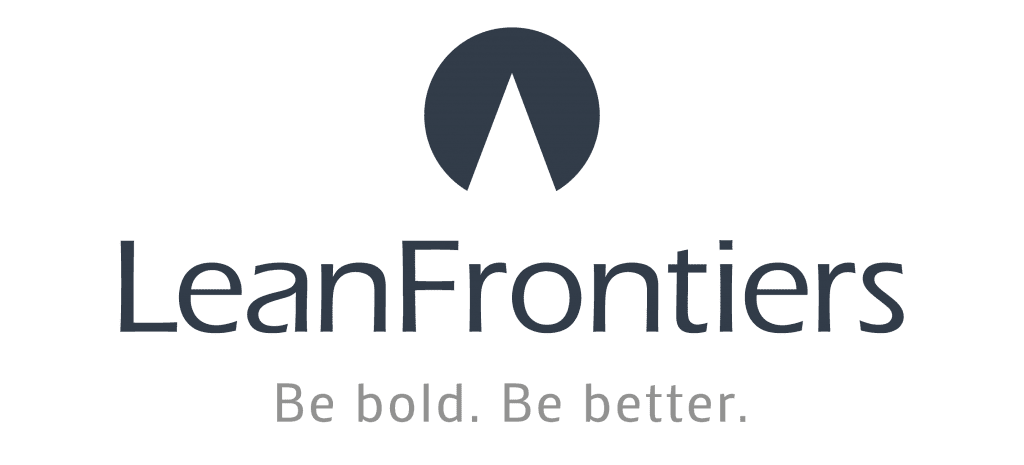Hey there! I know a lot about Lean. But TWI? Not so much!
Throw out any lean term and I’ll define it, describe it, and explain its place in the lean toolbox. Confession though… It wasn’t until last year that I finally learned what TWI was. Sure, I knew it stood for “training within industry,” but I had no idea what it was or what its connection was to lean. So I set a goal to understand “What is TWI?” Below is what I learned. This isn’t comprehensive, but it will establish a baseline for you to learn more.


The Beginning: The Need for TWI
To better understand TWI, it’s best to start with some history. Seriously?! Don’t tune me out just yet… it’s actually pretty cool.
During WWII the United States shipped our skilled workforce overseas to fight the war. Left behind (to build the war machine no less) was a green, inexperienced workforce. The U.S. government hired industry experts to create a training program to support a workforce of “Rosie the Riveters.”


Addressing the Skills Gap Crisis with TWI
These industry experts identified five needs of a supervisor – two were knowledge-related and three were skills-based needs. A series of 10-hour training classes were created for workplace supervisors, each aimed to close the most glaring skills gaps. The best known of these classes are called Job Instruction, Job Methods, and Job Relations. You can see the purpose of each class described in the figure below.

Many industrial historians cite TWI as part of the reason the Allies won the war… we simply out-produced the enemy because we quickly, consistently, and safely equipped an inexperienced workforce with skills to support production.
Enter Japan, and Toyota (and TWI’s role at Toyota)
After the war, the U.S. occupied Japan. During the occupation the U.S. introduced their best business practices to help rebuild Japanese Industry. TWI was part of that.
It was then that Toyota’s Taiichi Ohno recognized that TWI could address some of the production and workforce problems he was facing.
As the Toyota Production System was developed, TWI was there, underpinning its development and evolution. It’s only in recent years that TWI’s influence on TPS was recognized, hidden in a complex system that evolved over decades.

Enter Lean (and what Training Within Industry has to do with it)
So why have so few companies achieved Toyota-like success? A growing number of lean champions recognize their own struggles with lean may rest in TWI’s absence from most lean initiatives. As you see here, TWI’s influence can impact stability, standard work, a culture of improvement, sustainability and respect for people.

Where do I Learn TWI?
Successful implementation of TWI involves moving from a continuum of foundational knowledge to skills mastery. Lean Frontiers and our partners with the TWI Institute have offerings at each stage of your journey.
Gain foundational knowledge through the free e-book, TWI: The Origins of Japanese Management & Kaizen. And take giant leaps forward through the TWI Knowledge Certification which involves hours of video instruction and a strenuous certification quiz. Take that knowledge and put it to practice through a variety of 10-hour classes, including the immersive SkillPoint Workshop for Job Instruction. Step further into the role of Coach through TWI Institute train-the-trainer training on your way to TWI mastery.

1. Foundational Knowledge
- Introductory Video: What is TWI?
- Free e-Book: TWI – The Origin of Japanese Management & Kaizen
- Books by Patrick Graupp, TWI Institute
- TWI Knowledge Certification: Video Training & Certification Quiz
2. Advancing Knowledge
Attend the TWI Summit in Europe or North America and learn from company case studies, presentations on deployment best practices, actual skill development and practice, and to develop your network of other TWI practitioners.
3. TWI Skill Development
- Hands-on, 10-Hour open enrollment Job Instruction Workshop in a real-world simulation environment: SkillPoint Workshop for Job Instruction
- Open enrollment from the TWI Institute: 10-hour JI, JR, JM Workshops
4. TWI Coaching Development
From the TWI Institute: 40-hour Train-the-trainer
5. TWI Mastery
Time and Experience with Guided Coaching


